


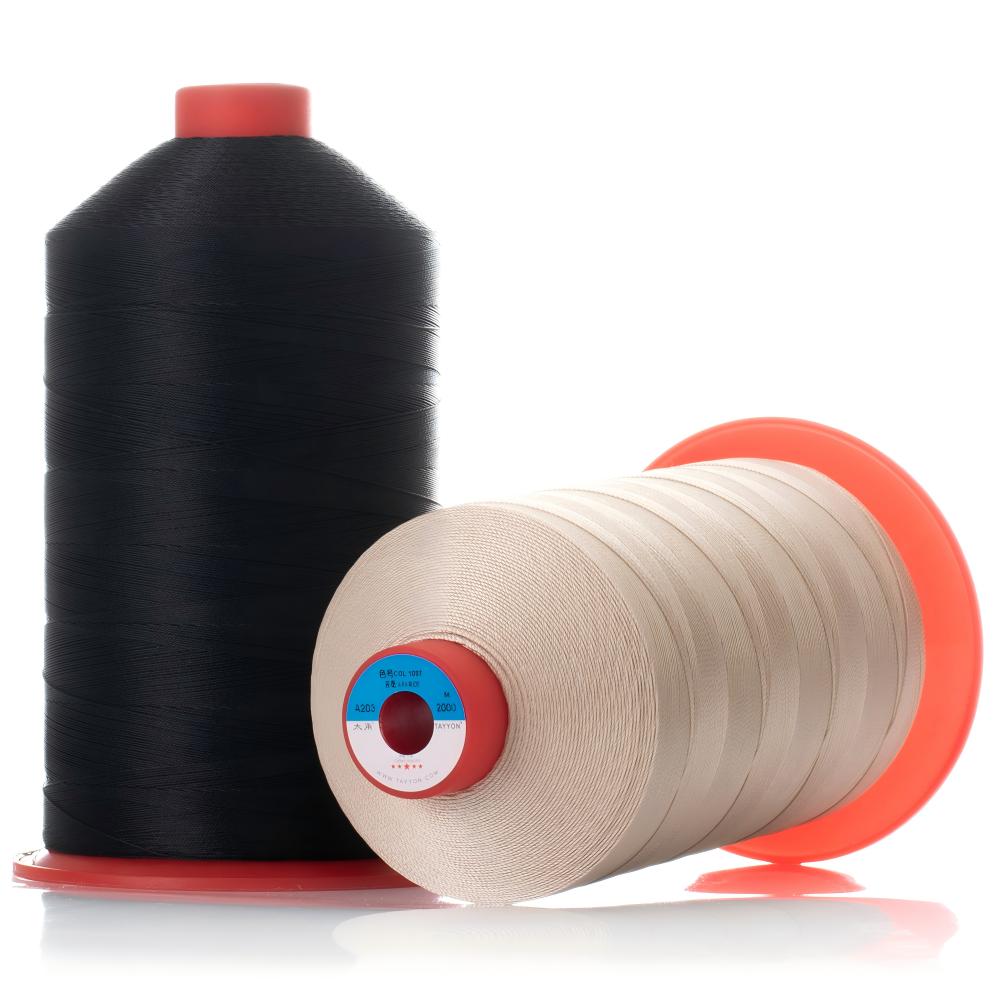
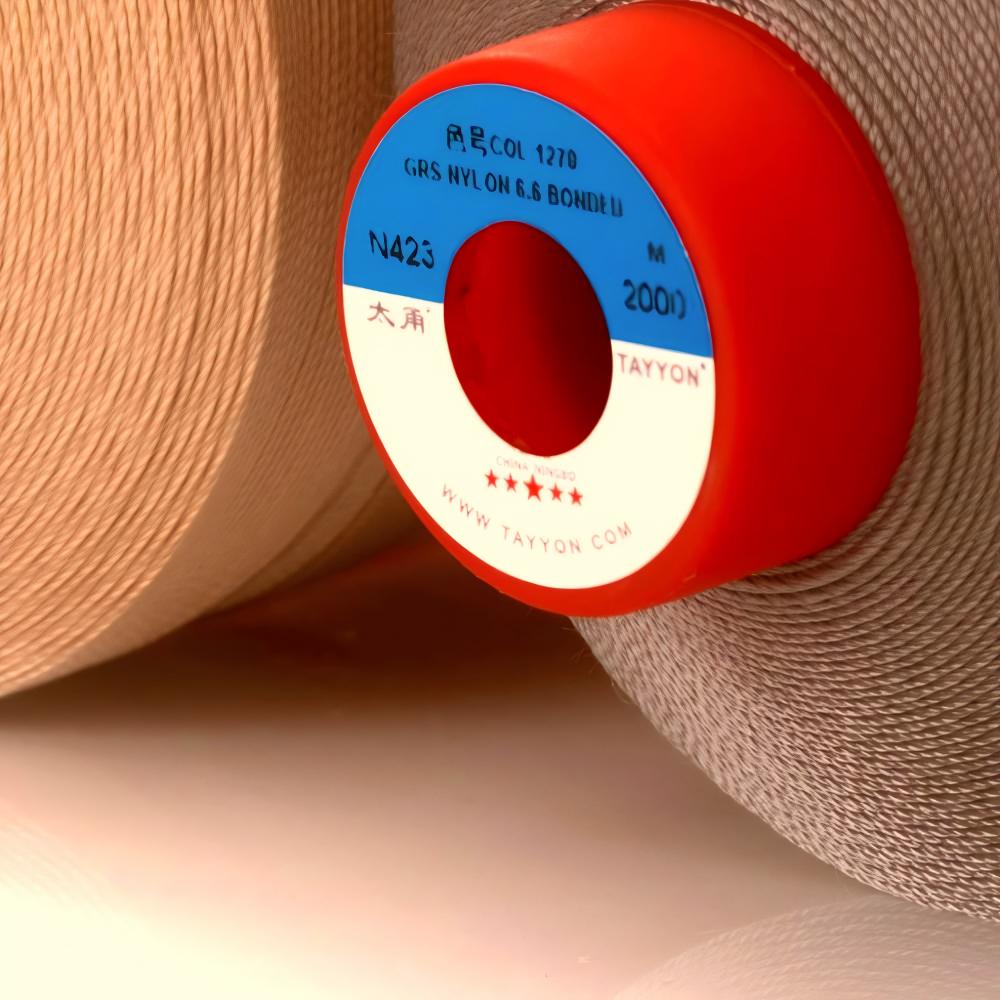
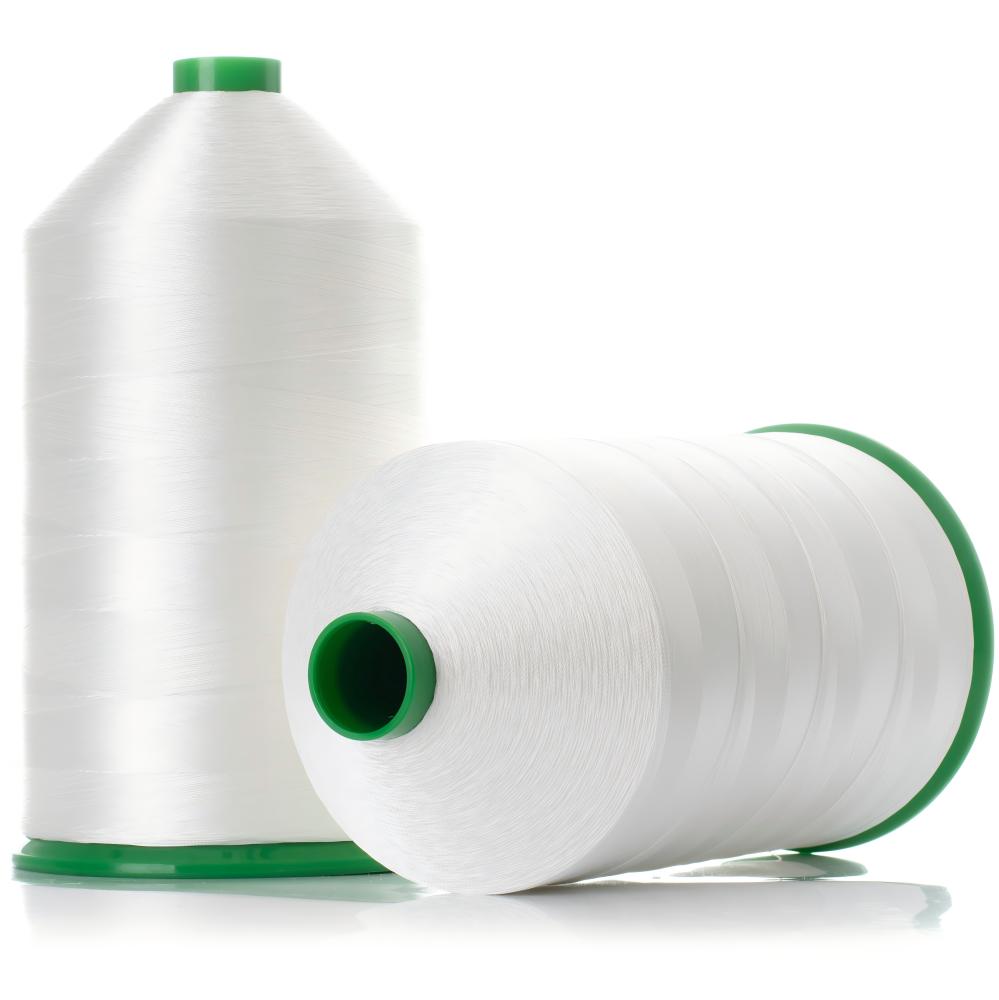
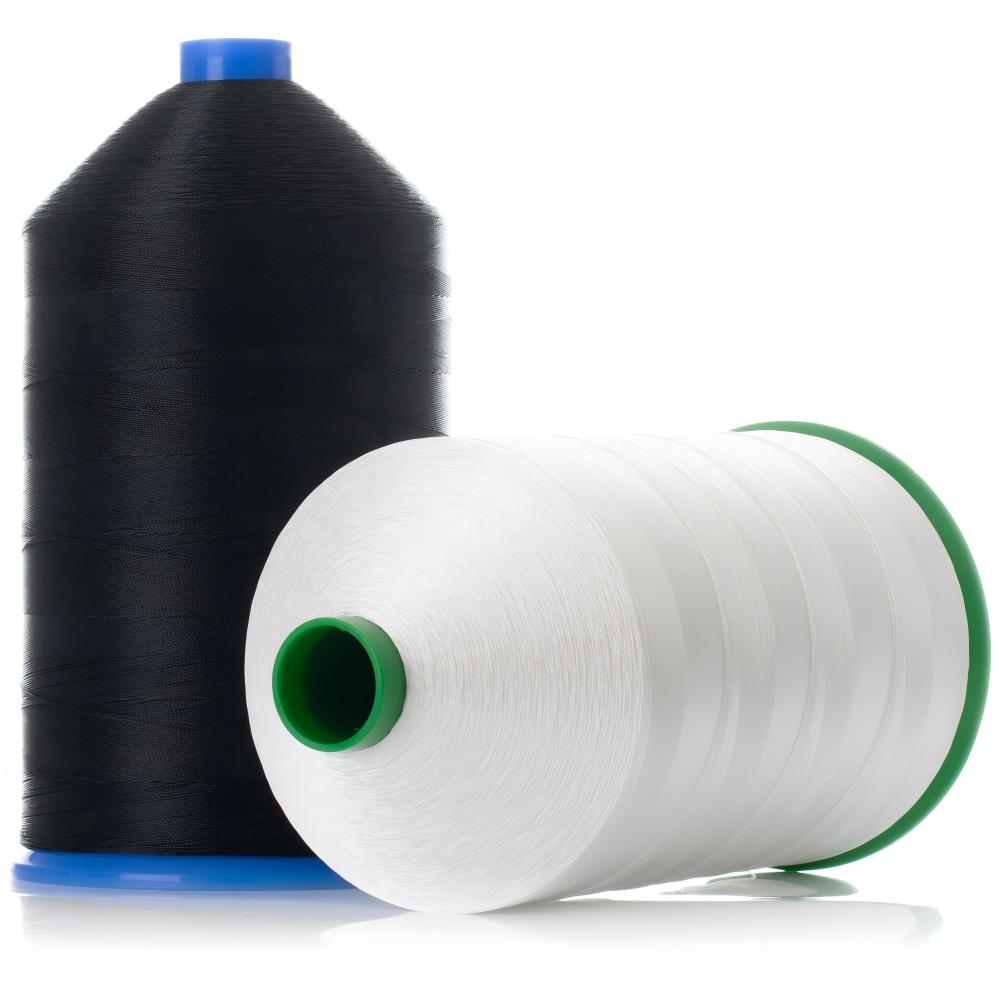

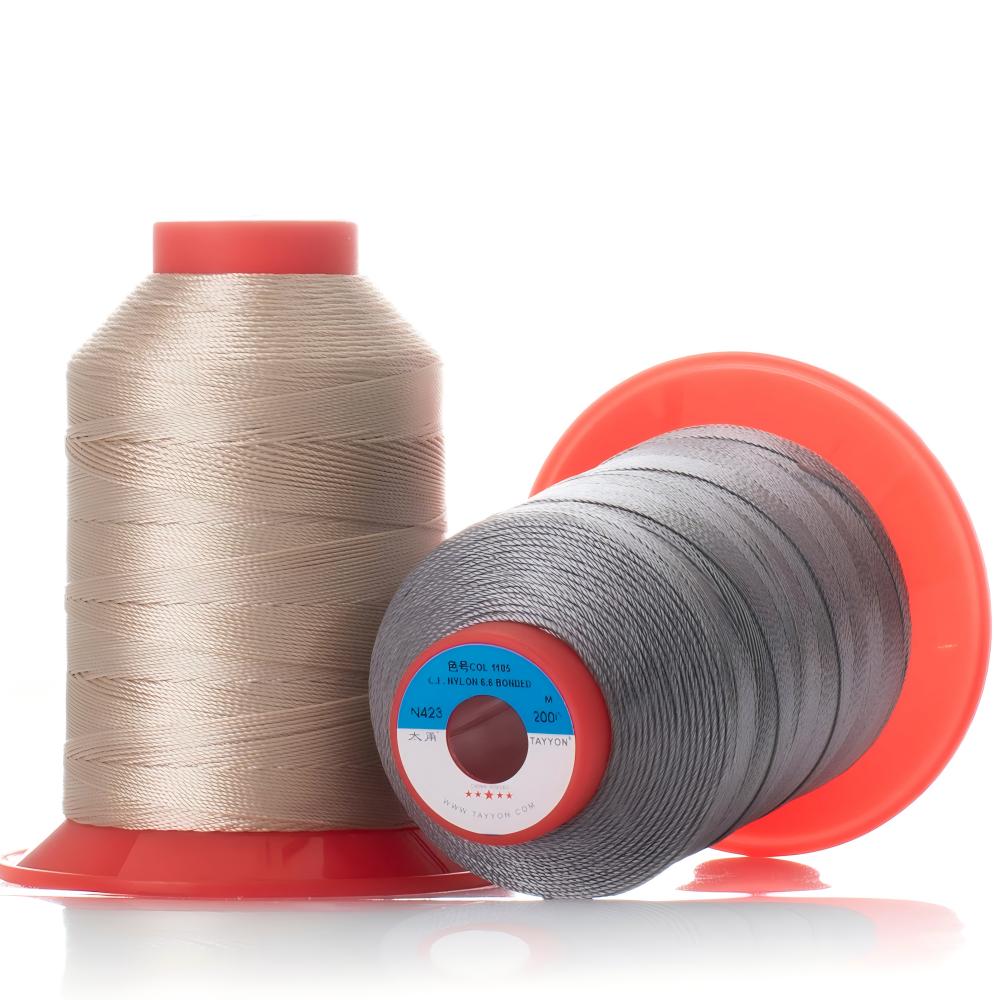
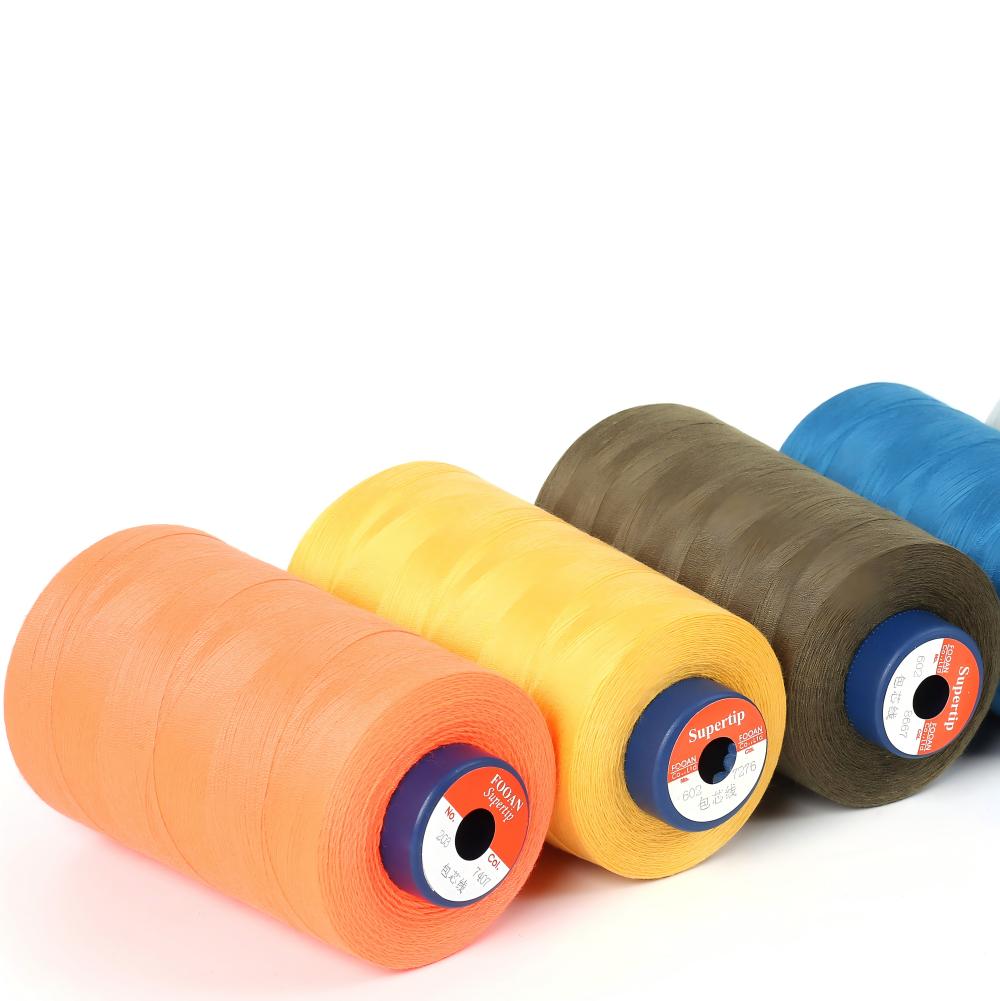
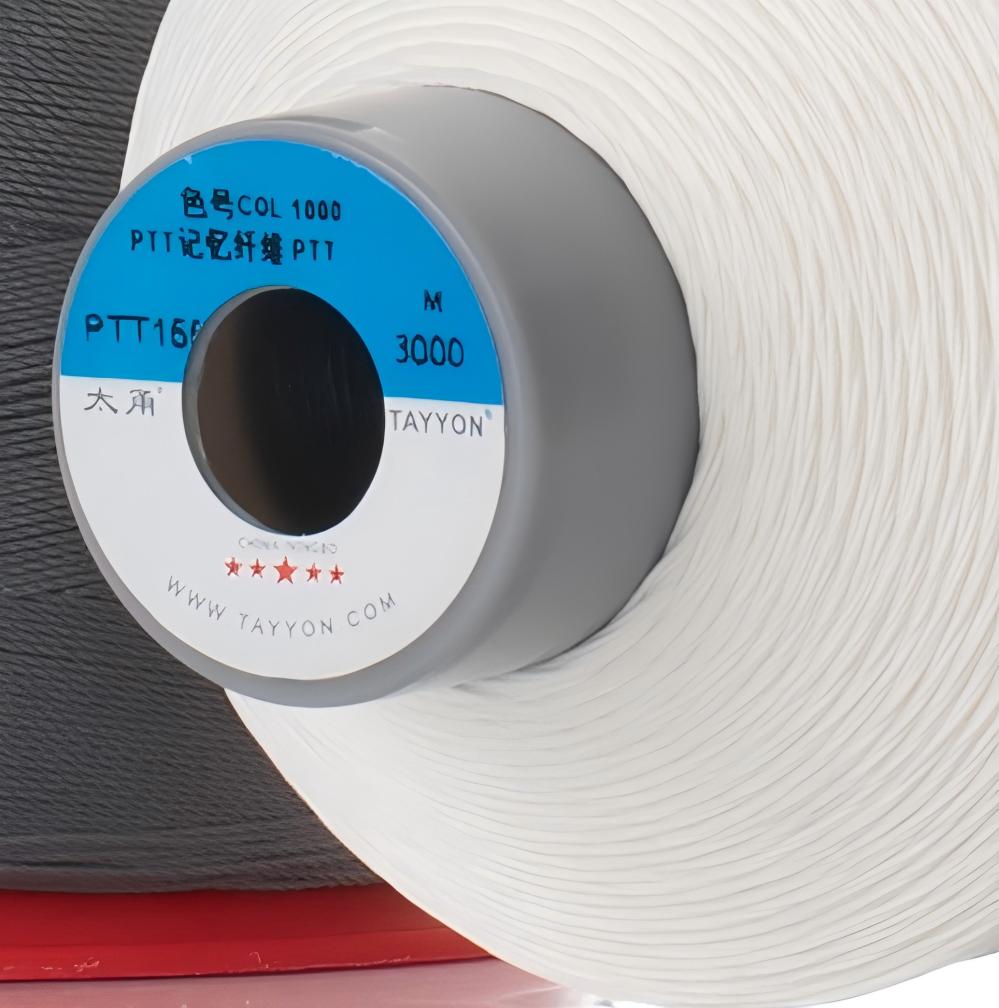
 Tel
Tel Email
EmailWhy Filament Polyester and Nylon Sewing Thread Sometimes Require an Additional Bonding Process
Release time:2025-09-28 Click:32Sewing thread made from high strength filament polyester or nylon 6.6 (N66) sometimes undergo an additional bonding process, transforming them into a superior type of bonded thread. The purpose is to significantly enhance the thread's strength, abrasion resistance, and uniformity, enabling it to meet the demands of extremely harsh industrial sewing environments.
Core Advantages Provided by the Bonding Process for Sewing Thread
1. Extremely High Strength and Fatigue Resistance
Principle: The bonding process optimizes the thread structure for mechanical balance. The reverse plying (or cabling) "locks" the individual yarn strands tightly together, allowing external forces to be evenly distributed across every single fiber.
Benefit: Under the high-speed impact and friction of thousands of stitches per minute in industrial sewing machines, bonded threads are less prone to breakage. This greatly reduces downtime caused by thread breaks and improves production efficiency. This is crucial for sewing thick materials (e.g., tents, safety belts, leather).
2. Excellent Abrasion Resistance
Principle: Threads treated with the bonding process have a smoother, tighter surface, making the fibers less likely to fuzz or unravel.
Benefit: When passing through fabric, the needle eye, and the presser foot, as well as during the product's use (e.g., frequently rubbed areas like shoe uppers, backpack straps), the thread can withstand repeated friction without easily wearing down, fuzzing, or breaking. This ensures seam integrity and product durability.
3. Uniform, Stable Structure and Smooth Surface
Principle: The reverse plying counteracts the internal twist torque of the single yarns, resulting in a very stable thread structure that is less prone to kinking or curling.
Benefit:
● Smooth Thread Passage: During high-speed sewing, the thread moves smoothly through the needle eye and various thread guides, reducing jams.
● Neat Stitches: The resulting stitches are even and aesthetically pleasing, without distortion caused by thread torque.
● Good Dyeability: The uniform structure allows dyes to penetrate evenly, resulting in higher color fastness.
4. Outstanding Sewing Performance
Combining all the above advantages, bonded threads exhibit extremely low breakage rates, consistent tension, and perfect stitch formation on high-speed industrial sewing machines. This is essential for automated, large-scale production in industries such as apparel, luggage, and automotive upholstery.
Summary and Applications
Applying the bonding process to high strength filament sewing thread is essentially a "reinforcement" treatment, upgrading them from a bundle of ordinary fibers into a high strength, high stability industrial component. Consequently, bonded threads are widely used in applications demanding extreme strength and reliability:
● Safety & Protection: Safety belts, airbags, firefighter clothing.
● Outdoor Equipment: Tents, backpacks, sleeping bags, parachutes.
● Footwear, Headwear, & Luggage: Sports shoes, leather shoes, handbags, travel suitcases.
● Industrial Materials: Canvas, filter bags, leather goods, automotive interiors.
In essence, it is the bonding process that enables the deep processing of filament polyester & nylon sewing thread into bonded thread, empowering them to handle the most demanding tasks in modern industrial sewing.
![]() Bonded Nylon 66 Thread Nylon 6.6 Bonded Thread PA66 Bonded Thread PA6.6 Nylon 6,6 Bonded Polyester Thread
Bonded Nylon 66 Thread Nylon 6.6 Bonded Thread PA66 Bonded Thread PA6.6 Nylon 6,6 Bonded Polyester Thread
Ningbo Tayyon Thread Co., Ltd.
 Beicun, Dongwu Town, Yinzhou District, Ningbo City, Zhejiang Province, China
Beicun, Dongwu Town, Yinzhou District, Ningbo City, Zhejiang Province, China
 Tel./Fax: 0086-574-88381625
Tel./Fax: 0086-574-88381625
 Email: info@tayyon.com
Email: info@tayyon.com